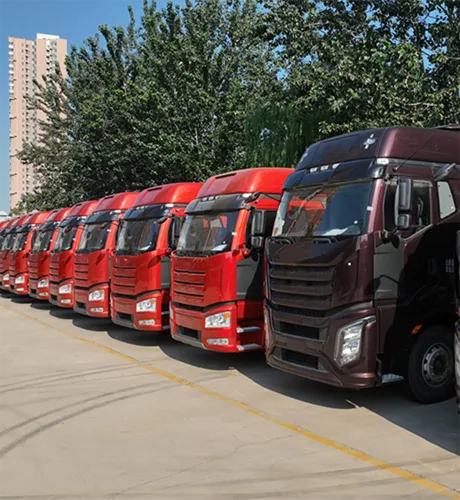53 foot semi trailers
The Versatility and Importance of 53-Foot Semi Trailers in the Logistics Industry
In today's fast-paced world, the transportation of goods is critical to the success of various industries. Among the numerous types of freight trailers, the 53-foot semi trailer stands out as one of the most prominent choices for logistics and freight companies. With its ability to maximize cargo space and improve efficiency, the 53-foot semi trailer has become a staple in the trucking industry, catering to a wide range of transportation needs.
Dimensions and Capacity
One of the defining features of the 53-foot semi trailer is its length. Measuring 53 feet in length and typically around 8.5 feet in width, it can offer an impressive cargo space of approximately 3,880 cubic feet. This remarkable capacity allows logistics companies to transport a multitude of goods, from packaged consumer products to industrial materials. Depending on the cargo, a 53-foot trailer can carry an average payload of around 45,000 pounds. This capacity makes it an ideal choice for companies looking to maximize their loads and minimize the number of trips required to deliver products.
Versatile Applications
The versatility of the 53-foot semi trailer is evident in the wide variety of applications it serves. In the retail sector, these trailers are frequently used to transport large quantities of consumer goods, including electronics, clothing, and food products. In the manufacturing industry, they are ideal for moving heavy machinery components, raw materials, and finished goods. Additionally, the 53-foot trailer is commonly used in the construction sector for hauling equipment and supplies to job sites. This adaptability makes it an indispensable tool for businesses in many different fields.
Cost Efficiency and Environmental Impact
Using 53-foot semi trailers can also lead to cost efficiency for trucking companies. By maximizing payload capacity, companies can reduce the number of trips needed for deliveries. Fewer trips not only save on fuel expenses but also contribute to a reduction in overall transportation costs. Moreover, with fewer trucks on the road, there is a positive impact on the environment, as greenhouse gas emissions are significantly reduced.
53 foot semi trailers

Regulatory Compliance and Safety
As with all transportation vehicles, 53-foot semi trailers must adhere to various federal and state regulations. These regulations encompass weight limits, safety standards, and maintenance requirements. Trucking companies often employ rigorous maintenance programs to ensure that their trailers remain in optimal condition, thus promoting safety on the roads. Furthermore, many modern 53-foot trailers come equipped with advanced safety features such as anti-lock brakes, electronic stability control, and GPS tracking systems, making transportation safer for both the driver and the cargo.
Technological Advancements
The evolution of technology has had a substantial impact on the trucking industry, and 53-foot semi trailers are not immune to these advancements. Many companies are now utilizing telematics to monitor the performance of their trailers, allowing them to track real-time data on fuel consumption, tire pressure, and maintenance needs. Additionally, the integration of electronic logging devices (ELDs) helps ensure compliance with hours-of-service regulations, enhancing safety and reducing the risk of fatigue-related accidents.
The Future of 53-Foot Semi Trailers
As the logistics industry continues to evolve, the future of 53-foot semi trailers looks promising. With the rise of e-commerce and increasing consumer demand for fast and efficient delivery, these trailers are likely to remain a central component of supply chain strategies. Furthermore, as sustainability becomes a focal point for many companies, the development of greener trailers and more fuel-efficient technologies may pave the way for even greater efficiency in the years to come.
In conclusion, the 53-foot semi trailer plays a crucial role in the logistics and transportation sectors. Its impressive capacity, versatility, and cost efficiency make it the go-to choice for many businesses. As the industry adapts to new technologies and sustainability goals, the 53-foot semi trailer will undoubtedly continue to be a backbone of freight movement in the United States and beyond.
-
SINOTRUK HOWO 84 Electric Dump Truck for Eco-Friendly Heavy HaulingNewsJul.26,2025
-
The Fast 16-Gear Manual Transmission Assembly for Heavy TrucksNewsJul.25,2025
-
Mercedes Benz Actros 1848 42 Tractor Truck for Sale - Reliable PerformanceNewsJul.24,2025
-
High-Quality Water Pump Assembly for Sinotruk Trucks – Durable & ReliableNewsJul.23,2025
-
Premium Truck Engine Antifreeze Coolant Fluid for Heavy Duty VehiclesNewsJul.22,2025
-
FOTON View G7 Mini Bus: Affordable & Spacious TransportNewsJul.22,2025
Popular products

























